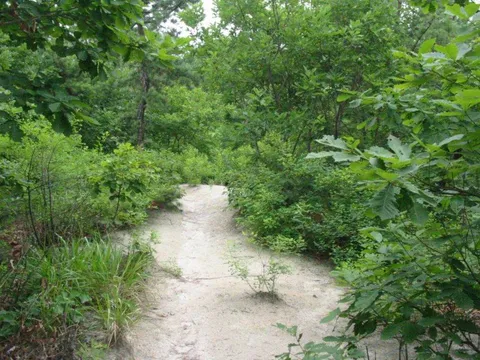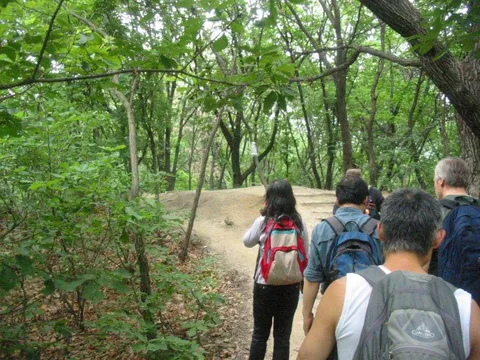Thanks to Korea4expats for advertising the hike, and the Seoul International Hikers Club for organizing the event!

Dobongsan is one of the most favorite mountains among Korean hikers in Seoul. Standing at 739.5 meters tall (about 2,426 feet tall), it is part of Bukhansan National Park and stands between Bukhansan and Sapaesan. The name, Dobong, means “Peak of the Path”, and the mountain was regarded as a spiritual place, explaining why there are many temples, including Cheonchuksa, Wontongsa, and Mangwolsa.
Accessible by subway (though somewhat remote in northern Seoul), I met up with the Seoul International Hikers Club at the Dobong station in northern Seoul. Featuring several Koreans, a couple Russians, a Swede, and a couple that seemed to defy having any nationality, the group was truly multicultural. English was the international language of choice, though most Koreans spoke in Korean.

Getting started on the hike, I remained in the middle of the pack.

One of many impressive rock formations along the way. Our leader chose a trek that was less commonly chosen by others, but was still rewarding in the scenery and sounds – beautiful nature sounds and the sounds of silence.

The trail is well-developed and built-in, and was pretty easy to climb through this section.

Along the way we came across several statues, most having Chinese characters on them. I suspect they had something to do with the Buddhist temples on the mountainside, though we didn’t spend much time near the statues to find out.

A rest stop! The rain began to fall shortly after this stop – although it was a welcome rain. Something about washing the sweat away made the rain quite welcome.

After a treacherous rocky climb, we made our way to a temple – Wontongsa temple, to be exact. Although we didn’t see any Buddhist monks around (just a lady that played the part of a custodian well), the buildings and views speak for themselves:
Four different buildings nestled in the security of the mountain.

The roof of one of the buildings. While at the highest point during the hike, our leader pointed to a higher peak, indicating that’s where we would’ve made it to had it not rained.

The Brahma bell – typically one of the ways used to wake up all the sentient beings of the world.
After enjoying the peace of the Buddhist temple, we made our way down the same rocky terrain we came up on. Going down isn’t usually as hard (gravity is on your side right?), but the rain made things a little more slippery.

After saying goodbye to the group (and following a couple ladies back to the subway), I happened across a garden – owned by a larger group, but with each plot owned or maintaned by an individual family.
Overall, Dobongsan is a wonderful climb – and it really helps to have a guide that knows where they’re going. Without a guide, you’d potentially be walking in circles, or worse, getting lost. It helps that there’s plenty of paths to try – so go if you have the time or want to take a chance!
Take the subway to Dobong station to reach the local city. If you’re walking uphill you’re probably going in the direction of the mountain 🙂 You can also take the Dobongsan station to get a start closer to the mountain.




Hey, I stumbled across your blog while surfing the internet. I think it’s great. I’m heading to Seoul in just over a week to teach too, and I’ve been trying to read up as much as I can. Feel free to check out my blog too: smileyjkl.blogspot.com
What an amazing place tucked up in the mountains! How long was the hike?
I have read your blog all the way through, and quite enjoyable it has been! You really seem to be making the most of your time.
Keep it up–the blogging, too!